Case Study: IBM COst of a data breach
Turning a yearly report into a trusted, business-critical experience.
Overview
From 2017 to 2020, I led creative campaign development for IBM Security’s flagship research asset: the annual Cost of a Data Breach report, produced in partnership with the Ponemon Institute. In 2016, the campaign was mostly a report and press release. By 2020, it had become a data-driven, interactive benchmark for the entire cybersecurity industry.
Over the course of four years, the campaign evolved from a traditional PDF release into a dynamic, interactive experience, and ultimately became a cornerstone of IBM Security’s annual communications strategy.
The opportunity
Our goal was to transform IBM Security’s annual Cost of a Data Breach report from a static PDF into a dynamic, engaging, and scalable experience. We saw an opportunity to elevate the report beyond its traditional format, creating an asset that could drive leads, reinforce IBM’s thought leadership, and deliver real value to enterprise buyers through interactive data and storytelling.
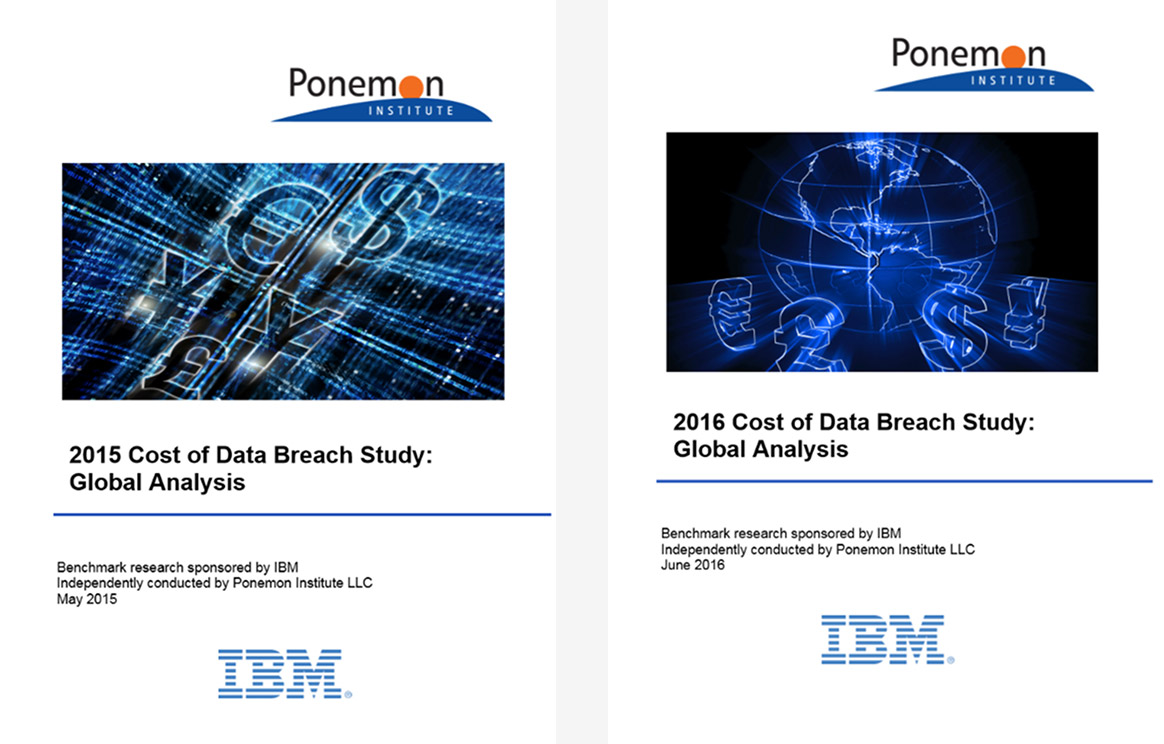
Our team saw this as an opportunity to:
- Increase global media coverage
- Generate qualified leads
- Improve engagement with enterprise decision-makers
- Create meaningful differentiation in a crowded cybersecurity market
My role
Over four years, I served as creative lead and UX strategist, collaborating across IBM’s security, marketing, and product teams. I was responsible for:
- Creative direction and design execution
- UX architecture, responsive build strategy, and data visualization design
- Briefing and aligning cross-functional partners and development teams
- Leading social/digital strategy to drive cross-channel campaign momentum
First concepts
Examining the details of the report revealed elements that lent themselves naturally to visualization. The report identified Industries, Countries, and Mitigating Factors, followed by costs based on combinations of these three factors.
This structure revealed a clear opportunity: by mapping these variables programmatically, the data could be made dynamic and interactive rather than static.
As a result, the calculator tool was capable of delivering hundreds of thousands of unique data views, through a design that transformed this overwhelming volume into a single, streamlined interface, simple on the surface, but rich with data beneath.
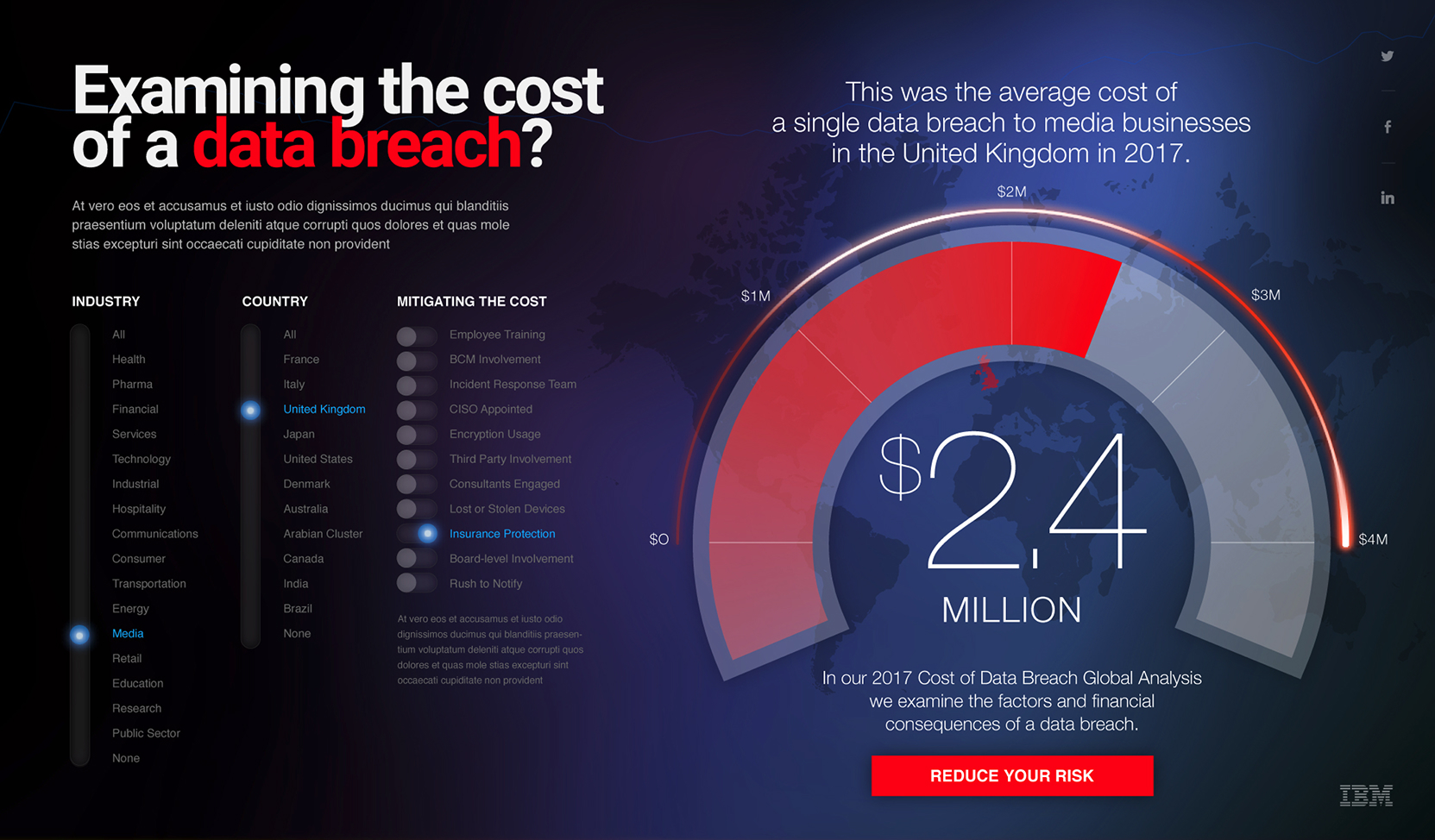

The evolution (2017–2020)
Each year, we pushed the experience further. Working with IBM’s content, analytics, and product teams, I helped lead a shift from static content toward modular, story-led, interactive design. Key elements included:
- A data breach calculator, allowing users to explore cost estimates by industry, country, and mitigating factor
- Modular campaign architecture that extended across web, social, paid, and partner channels
- Optimized UX journeys for lead capture without friction
- Downloadable full report PDF design
2017
The campaign expanded to include embeddable teaser versions of the calculator, dozens of sharable infographic cards, assessment tool that measured data breach preparedness, sharable social assets, and more.


IBM Security Feature
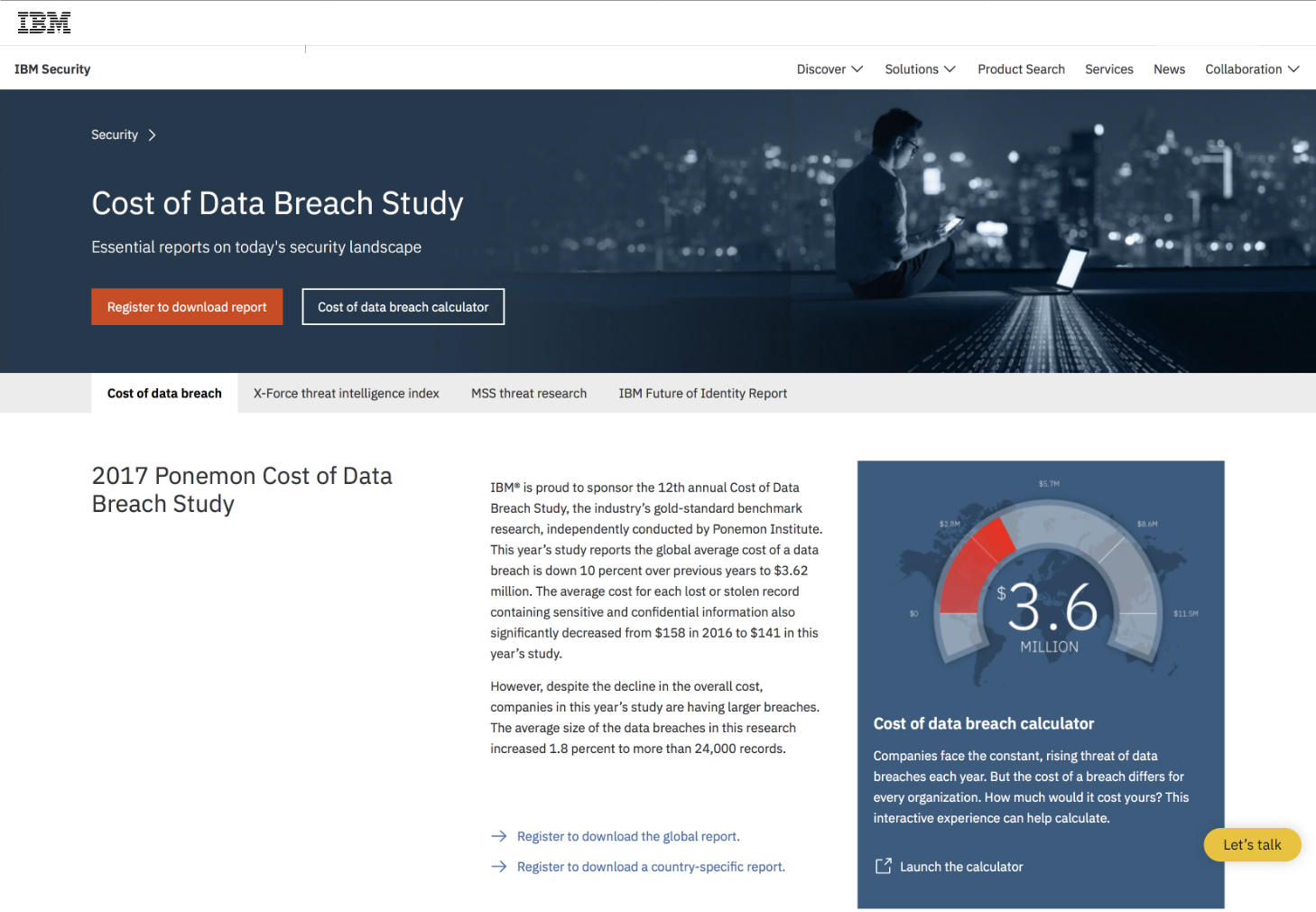
Asset Overview

2018
Covered in Forbes, NBC, Tech Republic, ZDNet, eWeek, Business Insider, Gizmodo
Core experience

Gated Experience




Assessment tool

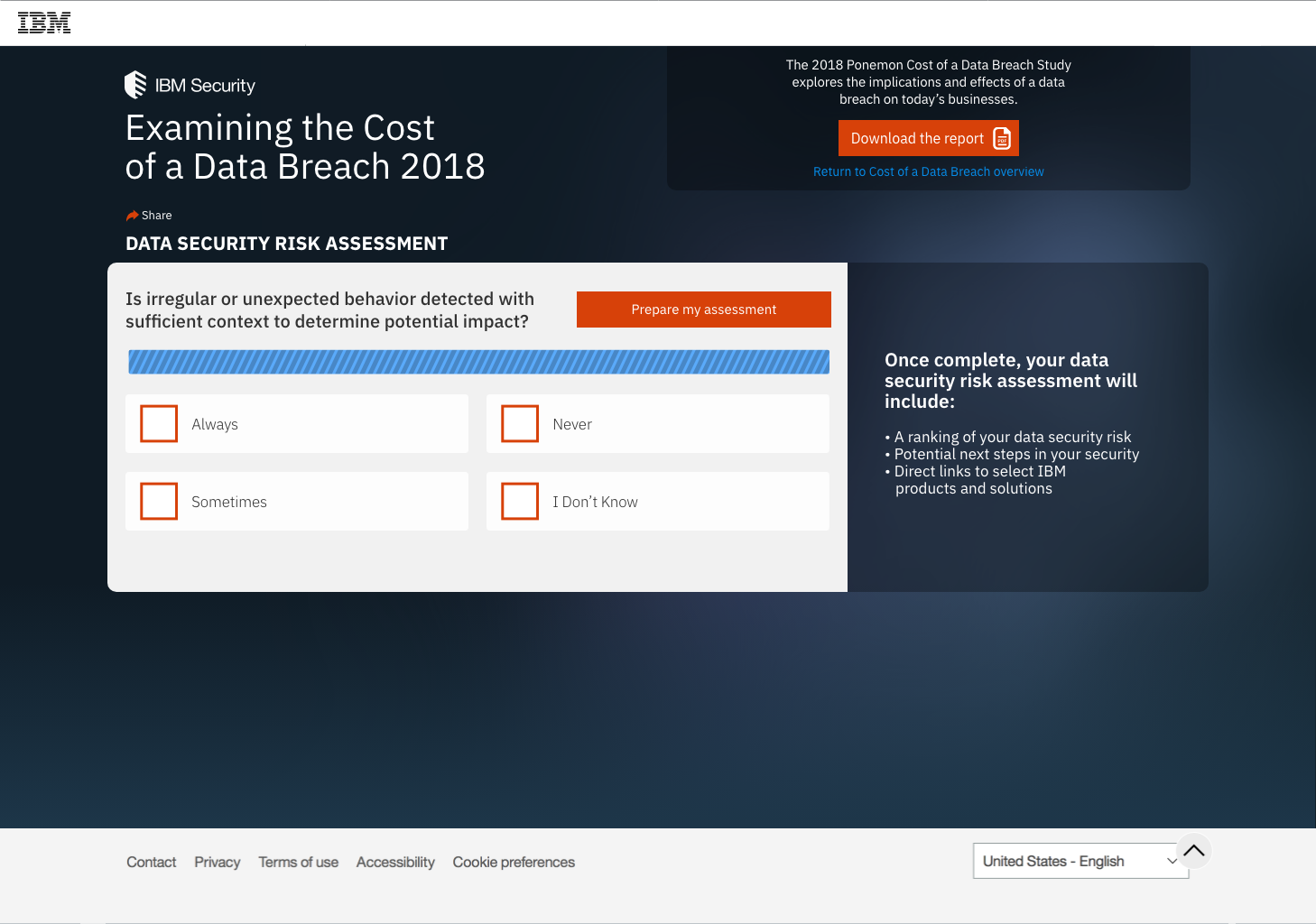

Report
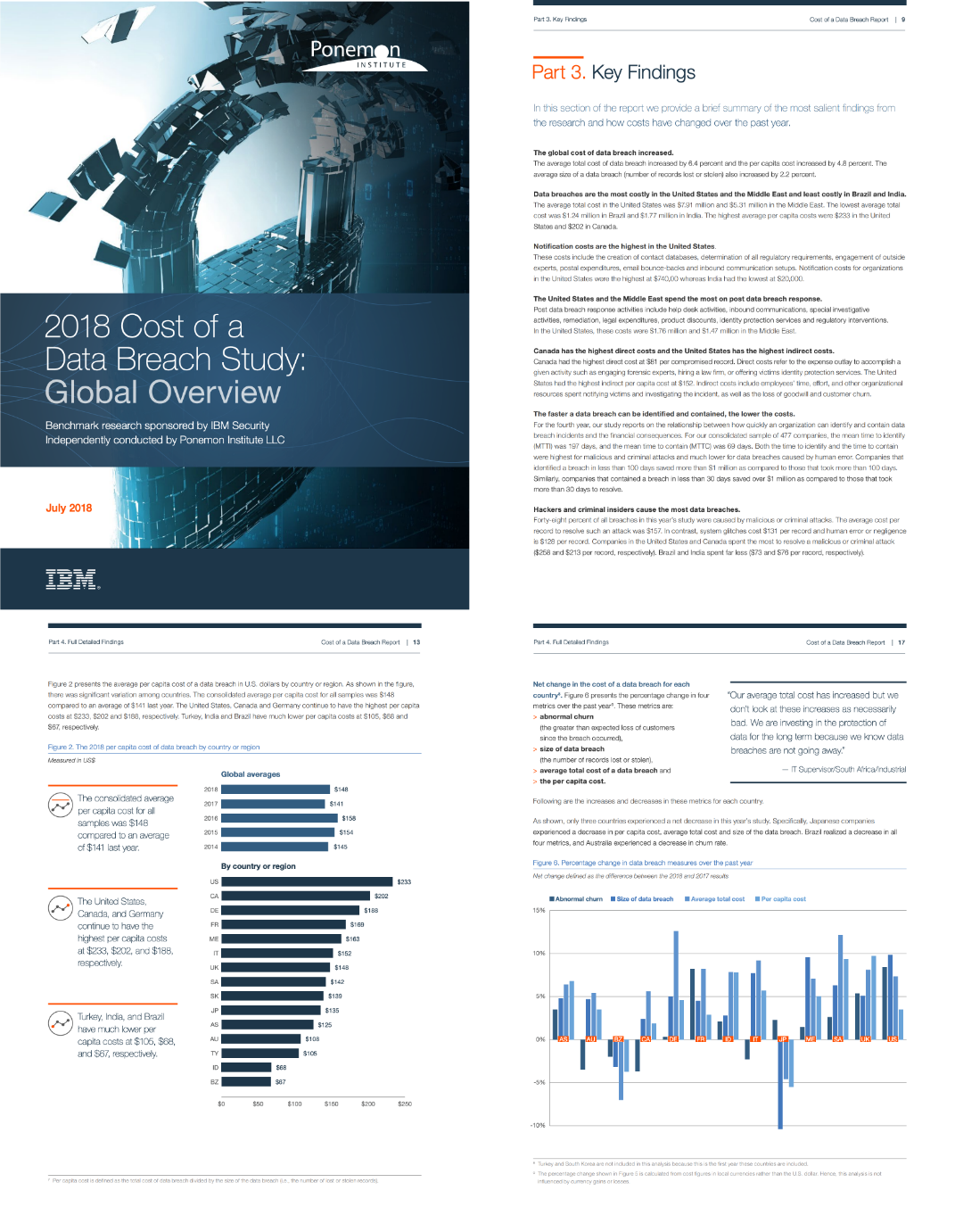
Companion Interactive Infographic
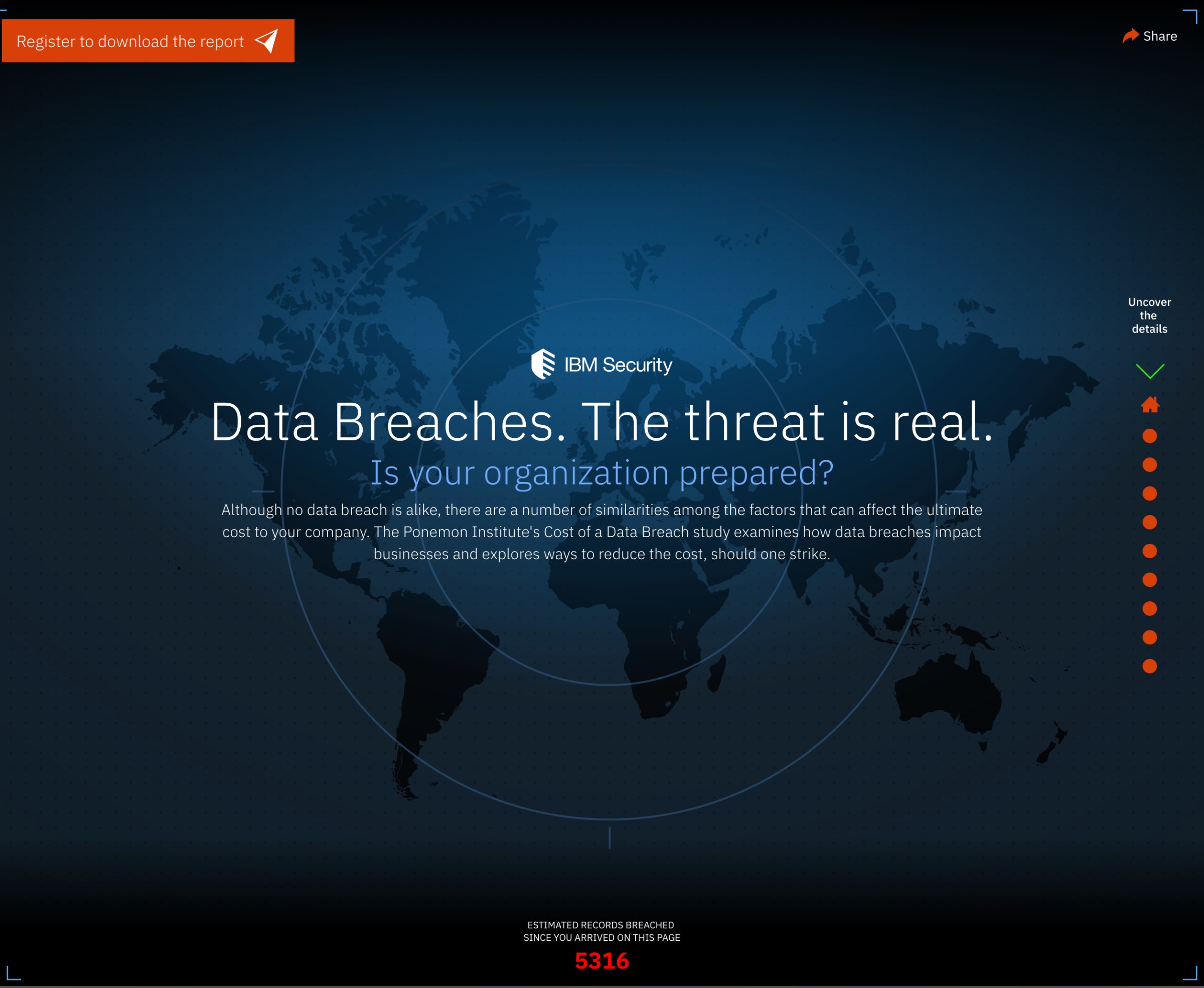








Media coverage sample
Julian Meyrick - Vice President, IBM Security Europe


Overview
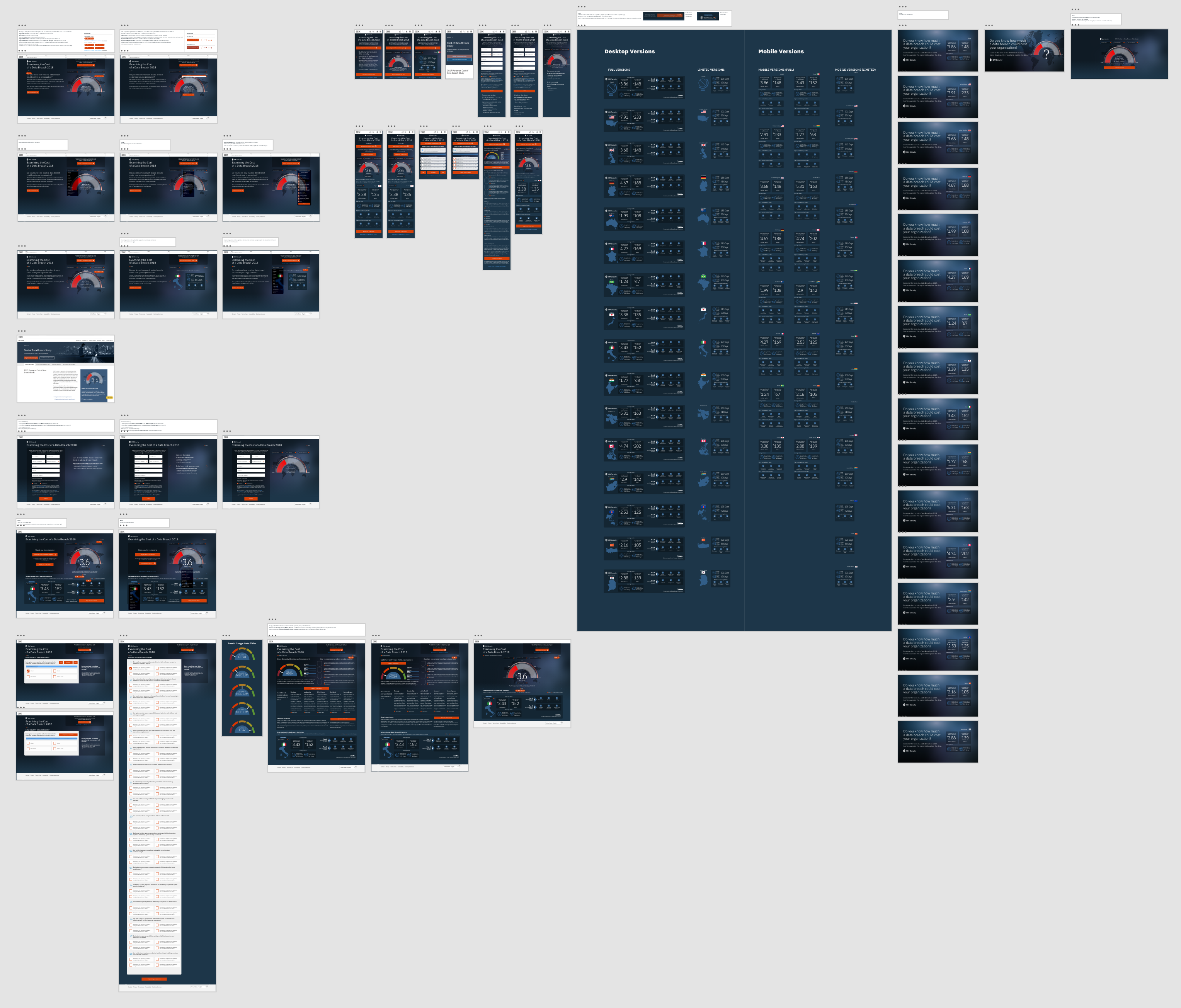
Desktop and Mobile Data Visualization Components

Full UX Desktop and Mobile





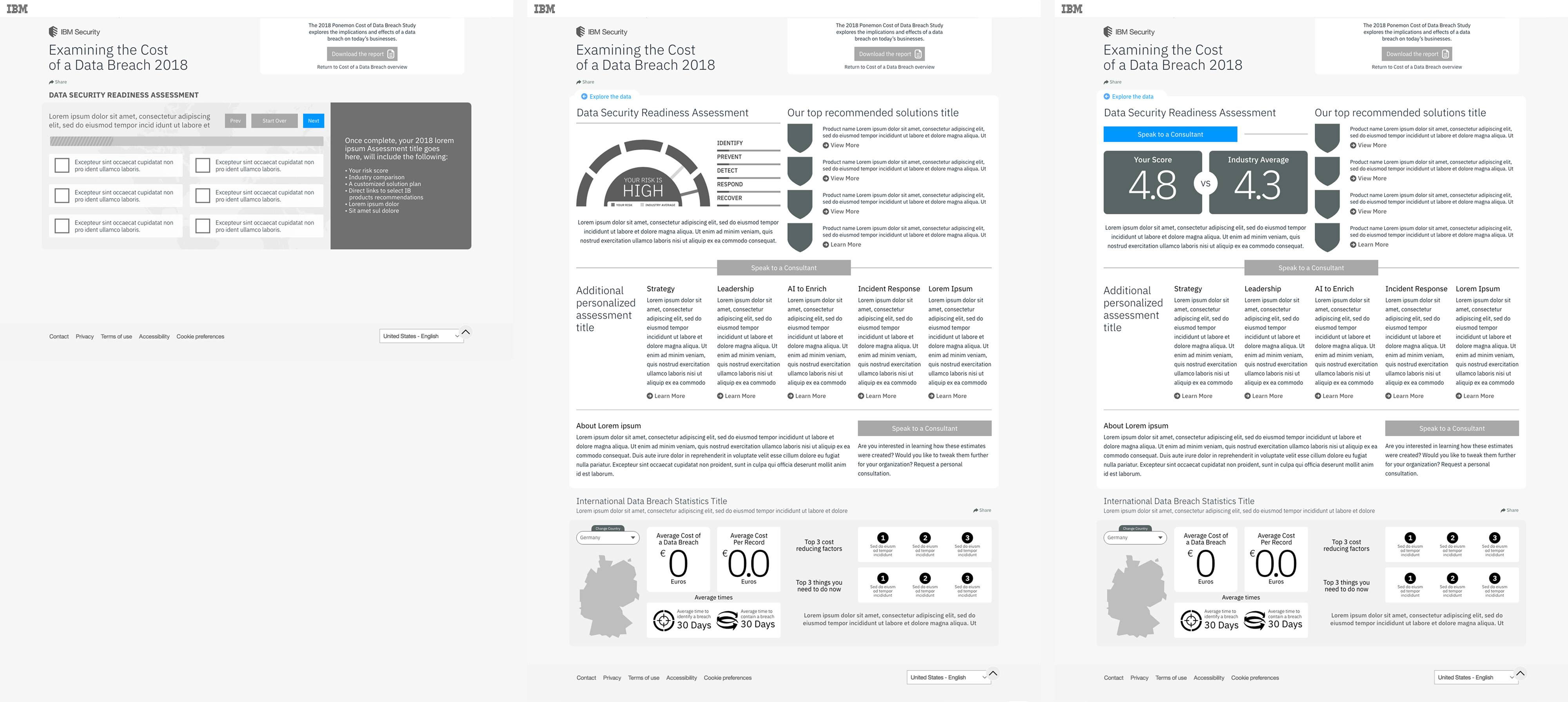
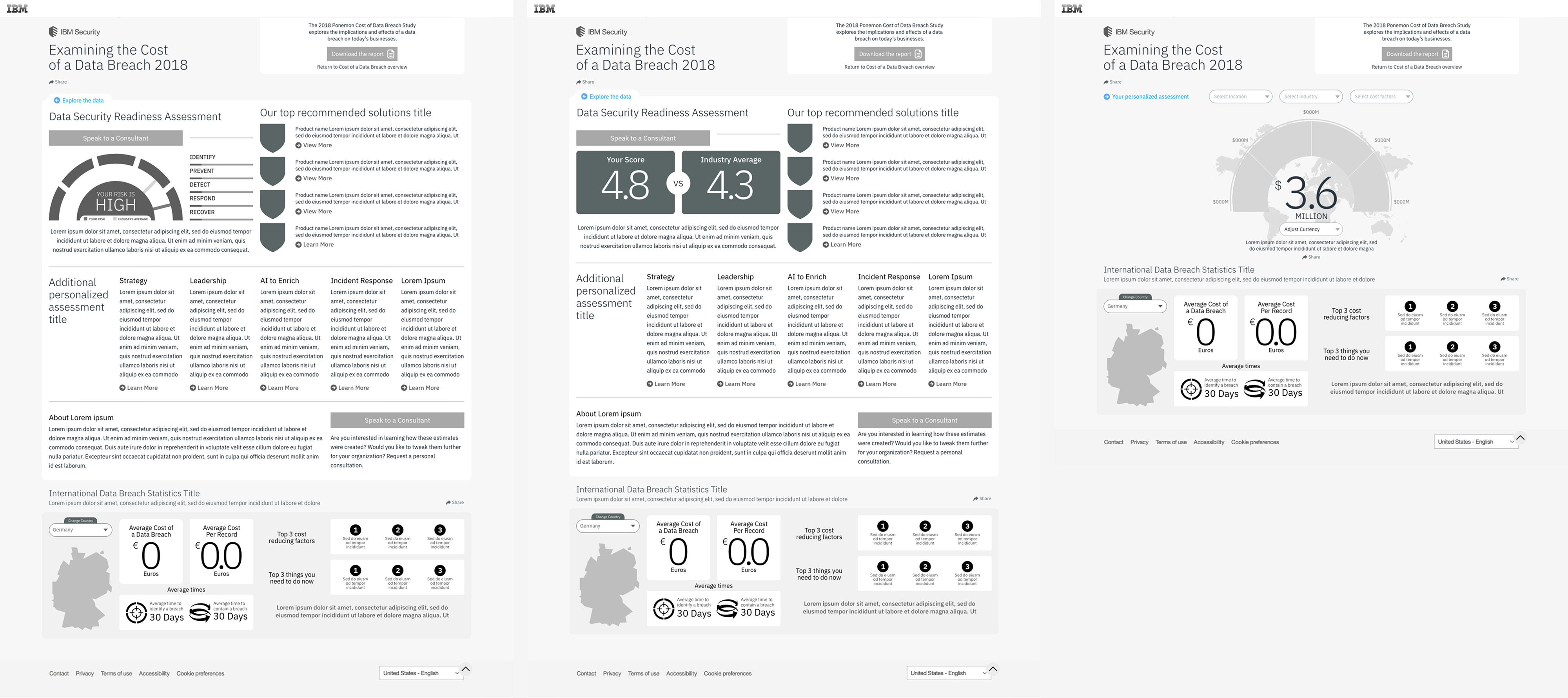

2019
The campaign expanded to include embeddable teaser versions of the calculator, deeper data visualization across the site, gated teaser content and data visualizations that focused on key insights, updated campaign direction, and a full microsite, and country-specific videos.
Covered in USA Today, Forbes, Fortune, Fox Business, ZDNet, Tech Republic, Los Angeles Times
Video capture
Core experience

Mobile

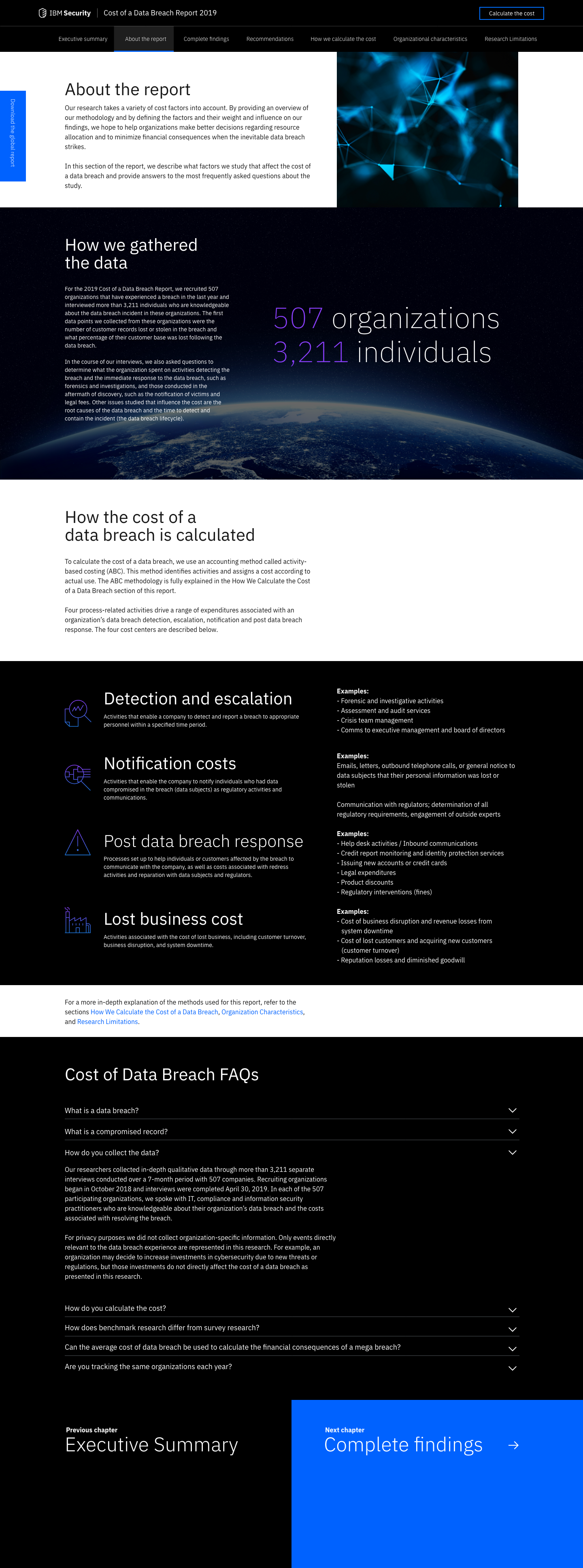
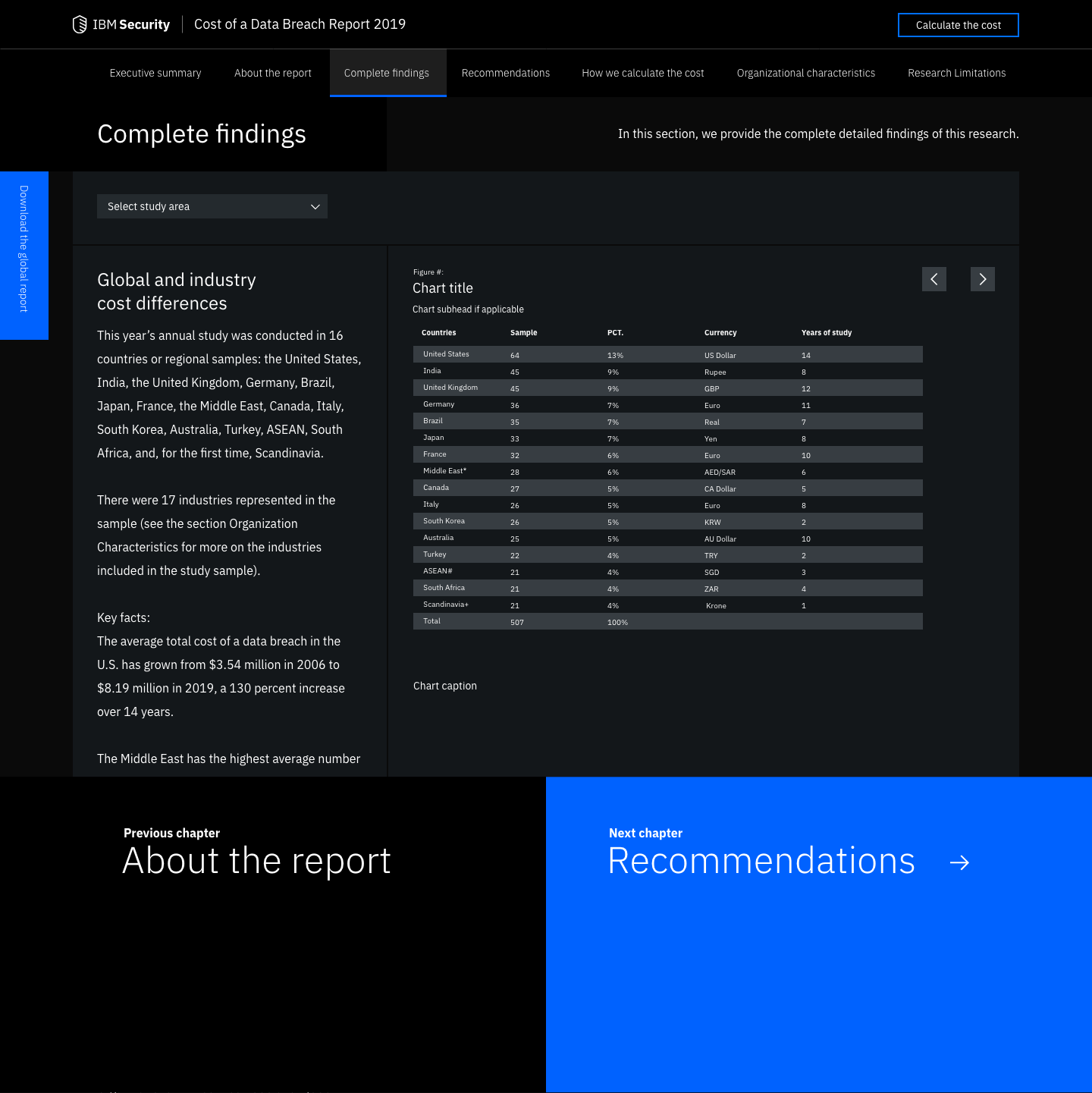

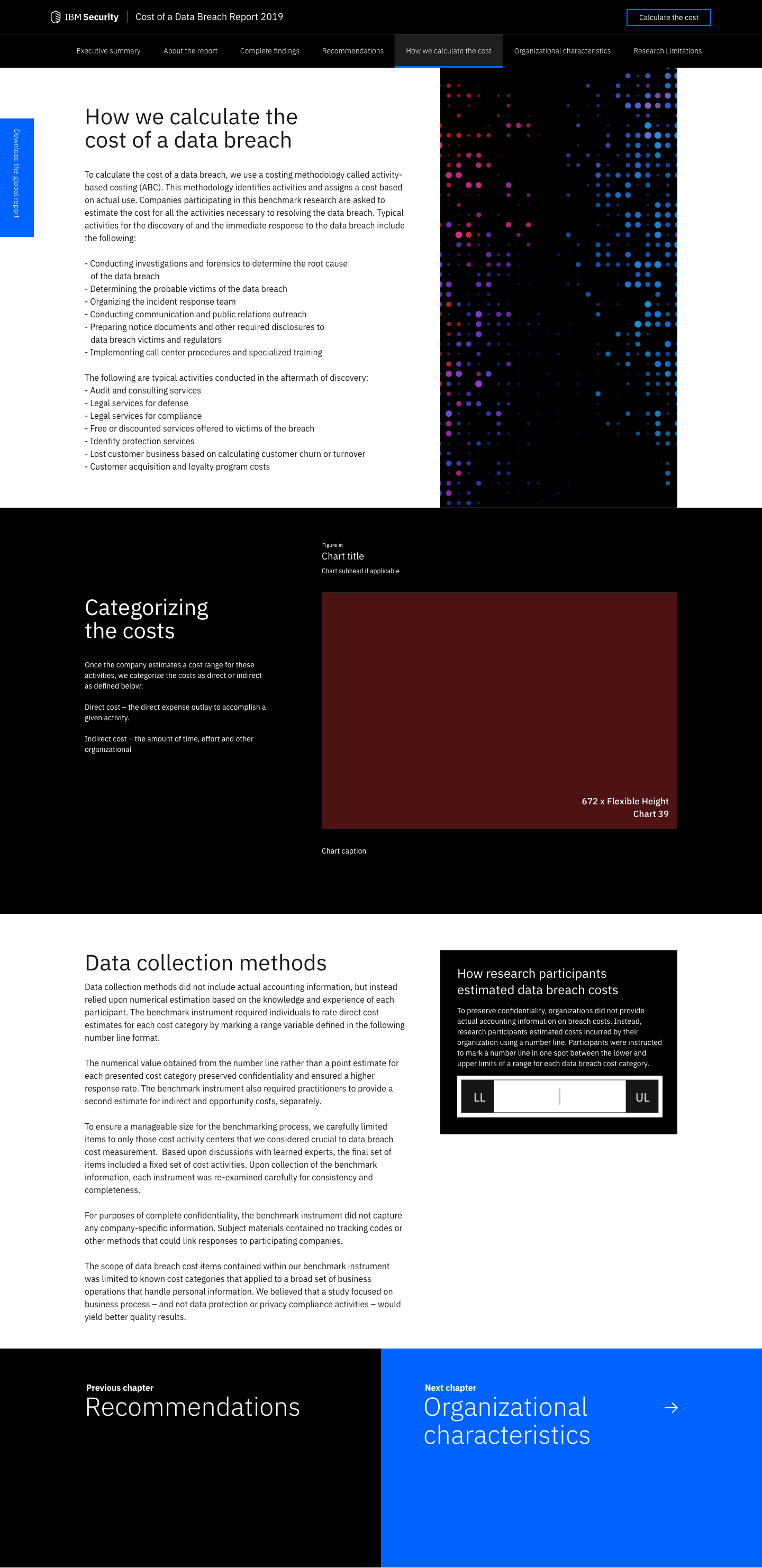
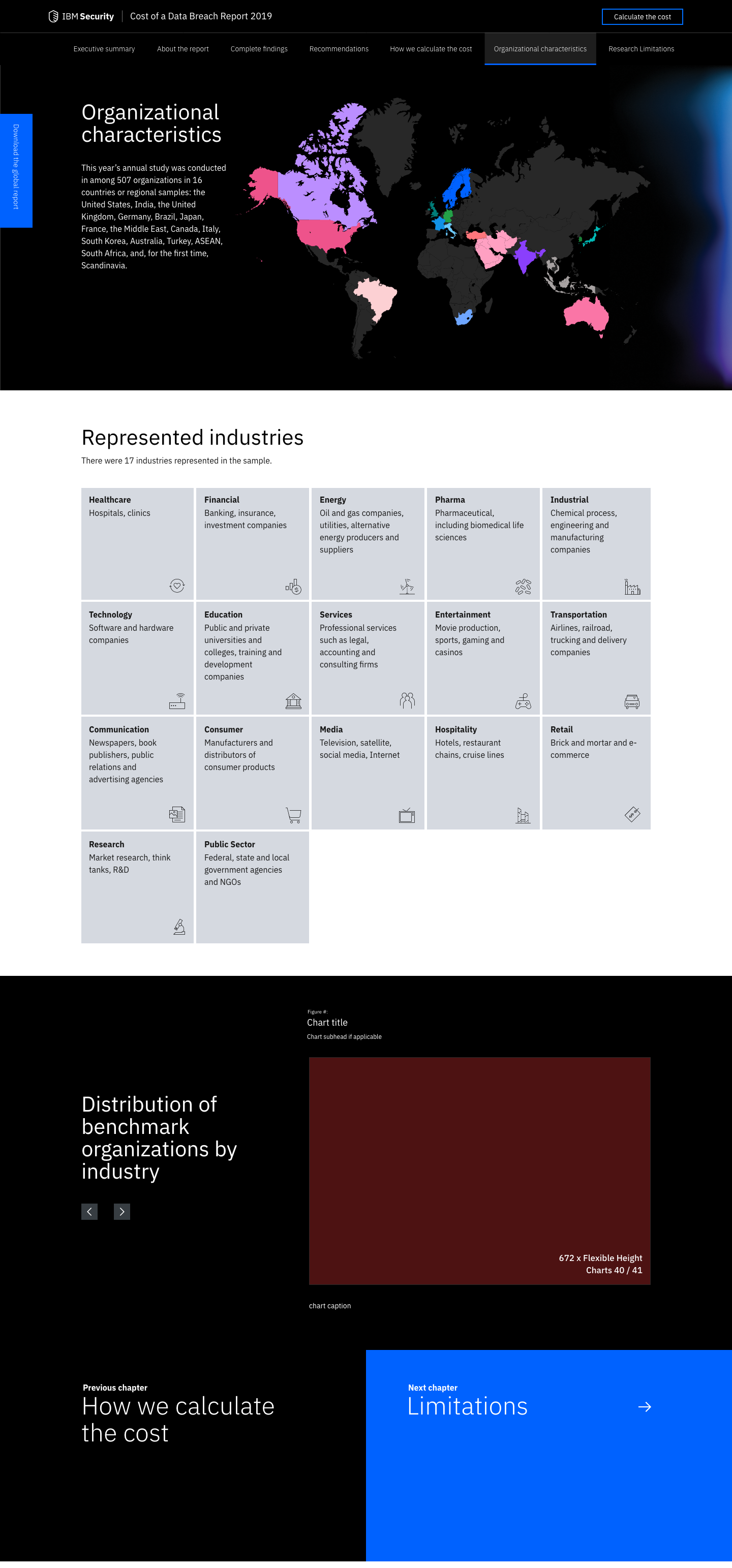
Data Visualizations

Overview

The campaign was elevated from the 2018 Security feature to being featured on the landing page of ibm.com.

2020
In 2020, an interactive map was introduced to provide a global perspective on data breach costs, security effectiveness, and related trends. The calculator remained a key asset and was enhanced with increased functionality. An industry trends video was developed to illustrate how the cost of data breaches has shifted over time. Users also gained access to regional and industry-specific recommendations. The PDF report and PowerPoint templates were further refined, and the library of social assets was expanded.

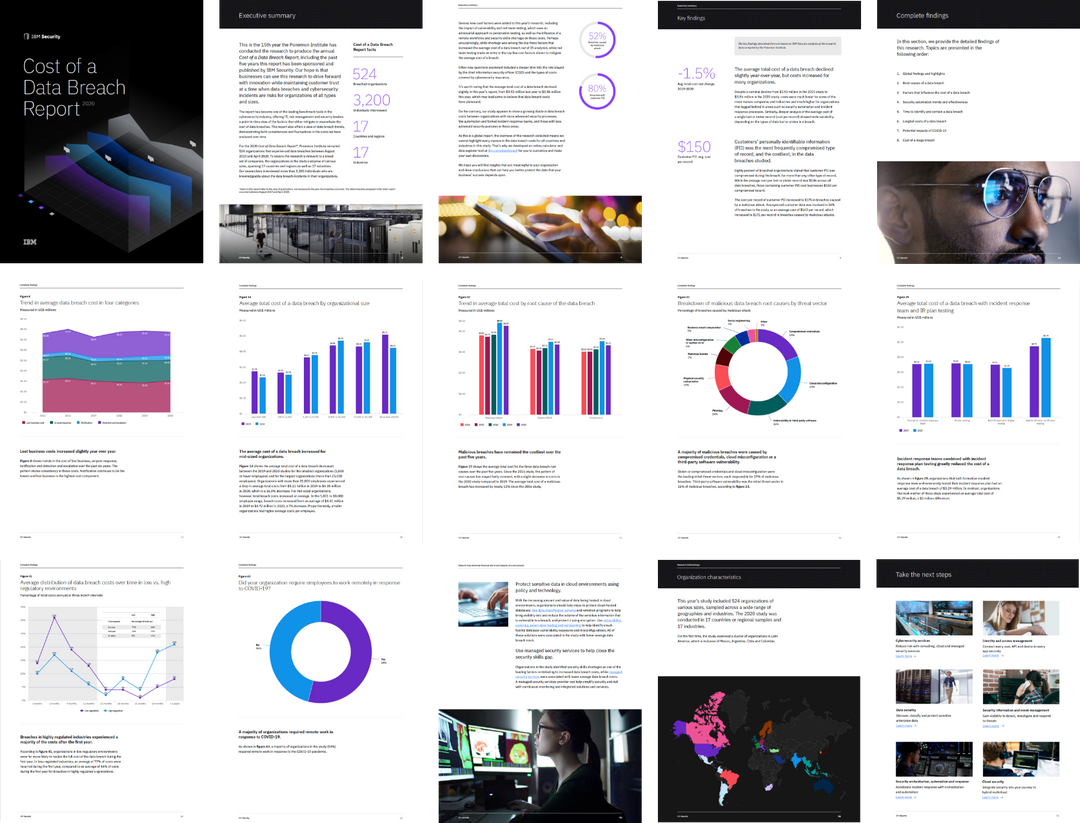

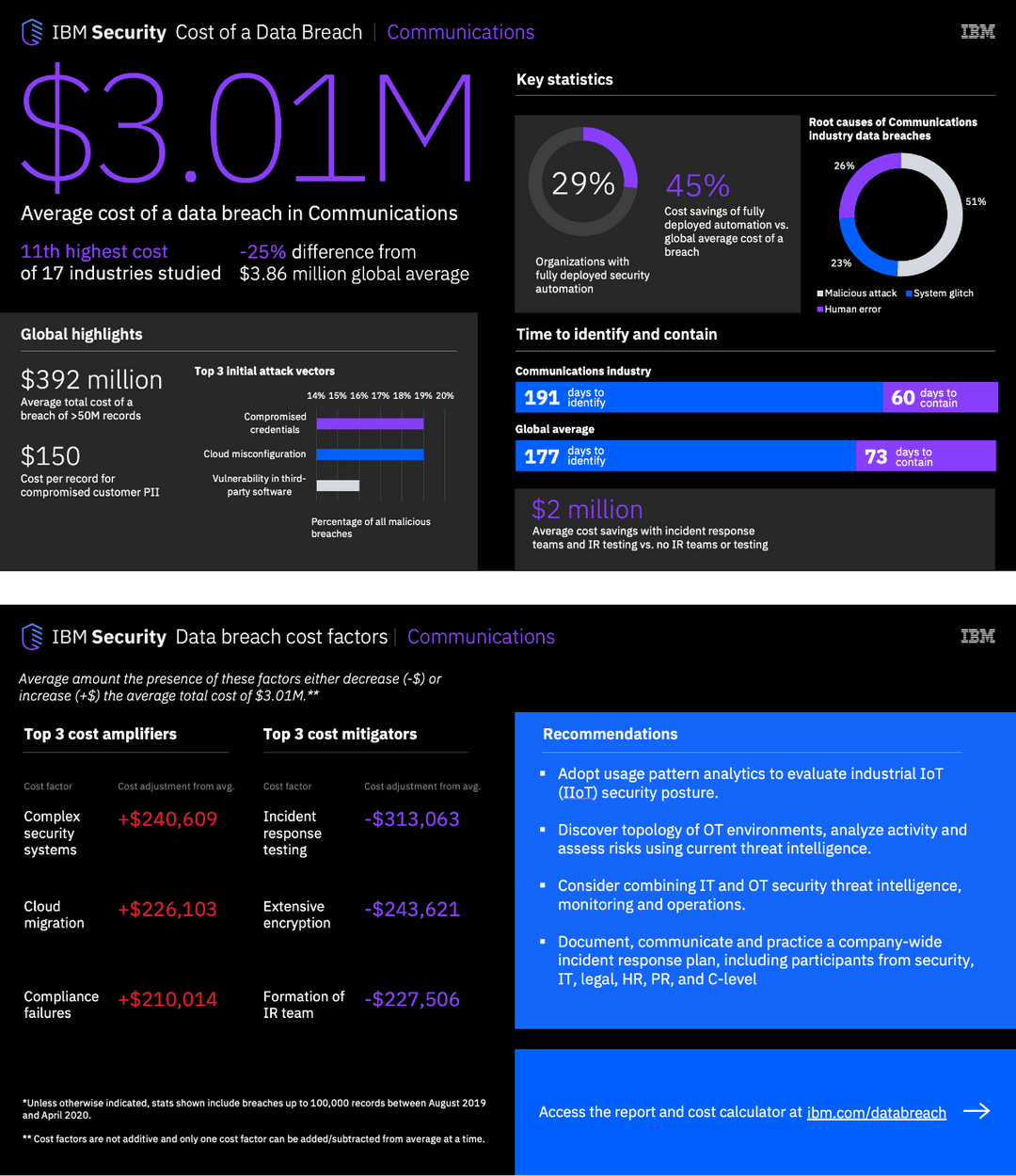
The Results
Across four years, the campaign delivered consistent, measurable value:
- Millions in validated lead revenue annually
- Year-over-year growth in engagement and form completions, including a 19% increase in 2020
- Featured in numerous top-tier trade publications
- "Your work with us has helped define the brand identity of IBM Security."
What This Work Represents
This wasn’t just a campaign. It was a long-term partnership built on trust, shared goals, and continuous evolution. By treating each year’s release as a new opportunity, not a repeat, we transformed a single asset into a globally recognized benchmark for cybersecurity insight.